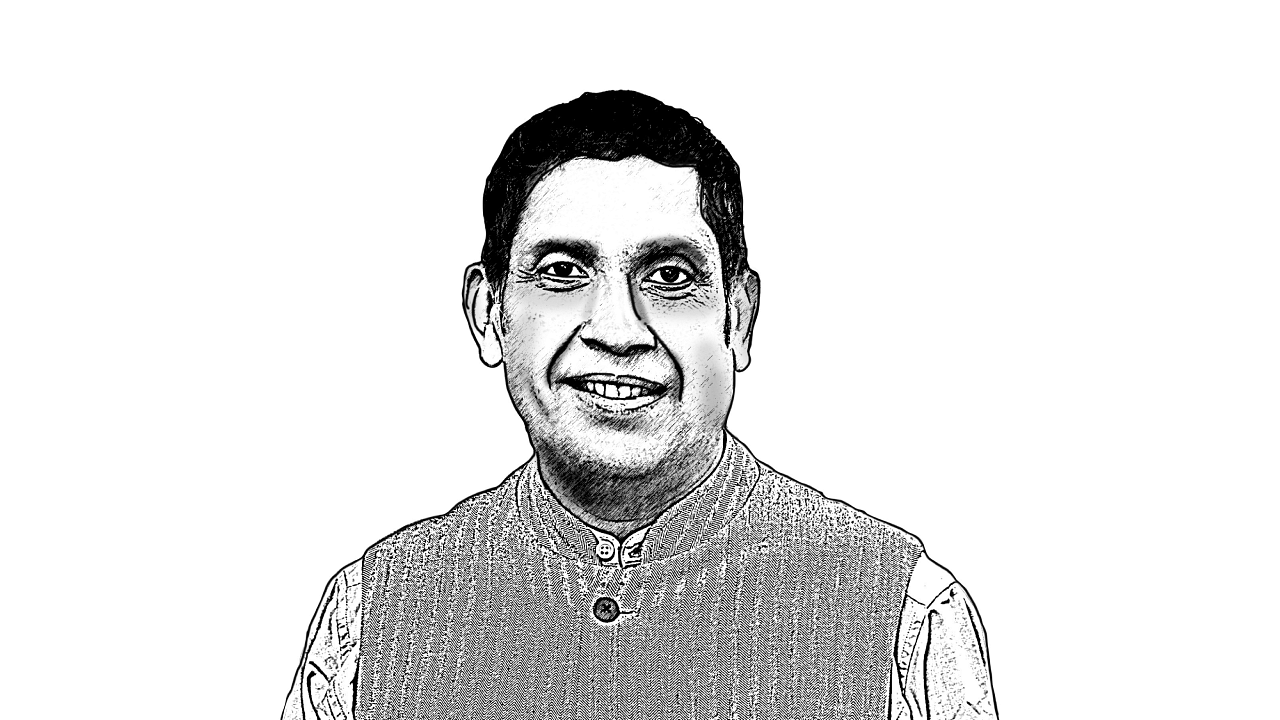
Praveen Chakravarty is a Congressman curious about correlations, causes & consequences. X/@pravchak
Credit: DH Illustration
In July, a few months after the Congress’ thumping victory in the Karnataka elections, I wrote an article in these pages titled “Karnataka’s elections were free but not fair”. It cited data and facts to show how India’s electoral market is unfairly skewed in favour of the BJP, with its near-total control of money, media and institutions. It was important to make this argument from the vantage point of a “winner”, to avoid it being dismissed as the Trumpian tirade of a sore loser. Now, after another set of state elections, it is critical to talk about the larger issue of fairness of India’s democracy once again, albeit this time as a “loser”.
For the recent Chhattisgarh elections, I analysed seven pre-poll surveys, 10 exit polls and two post-poll studies by 17 different organisations, ranging from the dubiously partisan to the scholarly academic ones. These together had surveyed more than two lakh voters in Chhattisgarh across all Assembly constituencies. Not even one of them predicted a higher vote share for the BJP than for the Congress. That is, while each survey varied in its prediction for seats, every one of them pointed in the same direction of a higher vote share for the Congress. This is a rare occurrence in India’s psephology history where every survey is directionally the same.
Further, I saw internal survey reports of the BJP and Congress that both confirmed the same trend. Ground reports from workers of all political parties in Chhattisgarh indicated the same pattern. To add, in private conversations, the BJP’s Union cabinet ministers admitted defeat in Chhattisgarh even as the state’s bureaucracy was getting ready for a second term for the Congress. So, it was entirely understandable that most were surprised at the final results when the BJP’s vote share was four percentage points higher than the Congress’. This was directionally opposite to nearly everyone’s expectation.
To be clear, I am absolutely not insinuating any EVM malfeasance in the Chhattisgarh elections. Blaming an inanimate electronic machine using the alibi of hackability is a lazy and disingenuous whine. Just because a machine can be hacked does not mean it was indeed hacked. There is simply no evidence yet of any malpractice in the Chhattisgarh elections and perhaps there was none. But absence of evidence is also not evidence of absence. Regardless, when one party has total and unfair domination of the election process through control of institutions and resources, and electoral results go in favour of that party, it is only understandable that suspicions are raised, and aspersions cast. It is undeniable that there is an eerie cloud of doubt hovering in the sky of Indian democracy. The question is not if India’s elections are tampered but if voters and stakeholders feel they are.
Multiple recent surveys show that 40% of India’s voters say they do not trust EVMs. 10% of voters say they do not go out to vote because they believe the EVMs are rigged. In other words, a whopping 400 million Indian voters say they don’t trust EVMs, and a 100 million don’t even exercise their democratic rights for this reason. Whether their distrust or fears are justified is not the point here. This is not about the legitimacy of India’s elections but about large numbers of Indian voters’ loss of faith in the election process, misplaced or otherwise. It is incumbent upon the Election Commission (EC) to ensure that voters trust the election process. That is the EC’s primary and most important responsibility. One simple way to achieve it is through the “two sources of truth” tweak to the current voting process.
The root cause of the 400 million voters’ mistrust of EVMs stems from the fact that they currently press a button on a black box to cast their vote, with no assurance that their vote was recorded as they chose. It would be condescending and foolish to dismiss these concerns as Luddite, especially when India’s election process still relies on symbols on ballots to help identify political parties for a vast number of voters. While VVPAT slips are generated after they are shown to the voter, it is still inside of a ‘black box’ for the average Indian voter’s concerns to be assuaged. The solution then is to present proof of their vote outside the black box, that voters can touch and feel.
The solution proposed by the I.N.D.I.A alliance in its December 19 meeting proposed a small tweak to the voting process. Under this, the voter still casts her vote by pressing a button on the EVM but now also gets a physical copy of the printed VVPAT slip, which she can touch, feel and verify to be sure that her vote is recorded exactly as she cast. After verification, she drops this VVPAT slip into a box. This box becomes the second source of truth of the election process, after the EVM. There are now two places where the vote is recorded – one in the EVM and another in the VVPAT slip box, after manual verification by the voter. This removes the fear of only a machine recording a vote and will increase trust in the election process enormously. At the same time, this does not delay or impede the election voting or counting process. This is a minor tweak for the EC but a major step in gaining voters’ trust in the election process.
By being obstinate or rejecting any idea for reform in the voting process, under the garb of ‘all is well’, the EC will only exacerbate voters’ distrust. The irony of suggesting ideas to improve voters’ faith in India’s elections just when India’s parliamentary institutions are in utter disarray aside, it is still important to strengthen India’s electoral process and arrest people’s cynicism about politics and democracy.